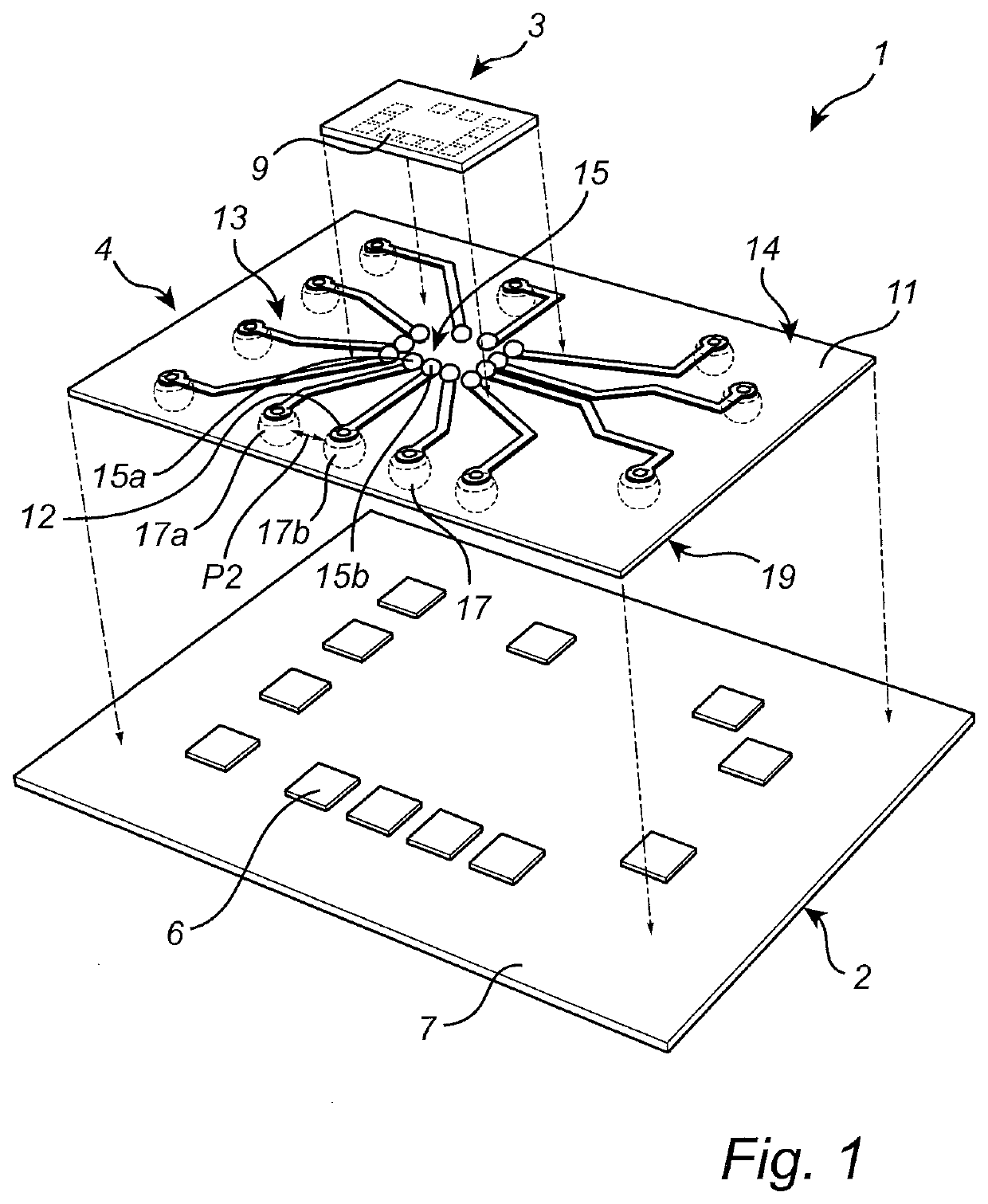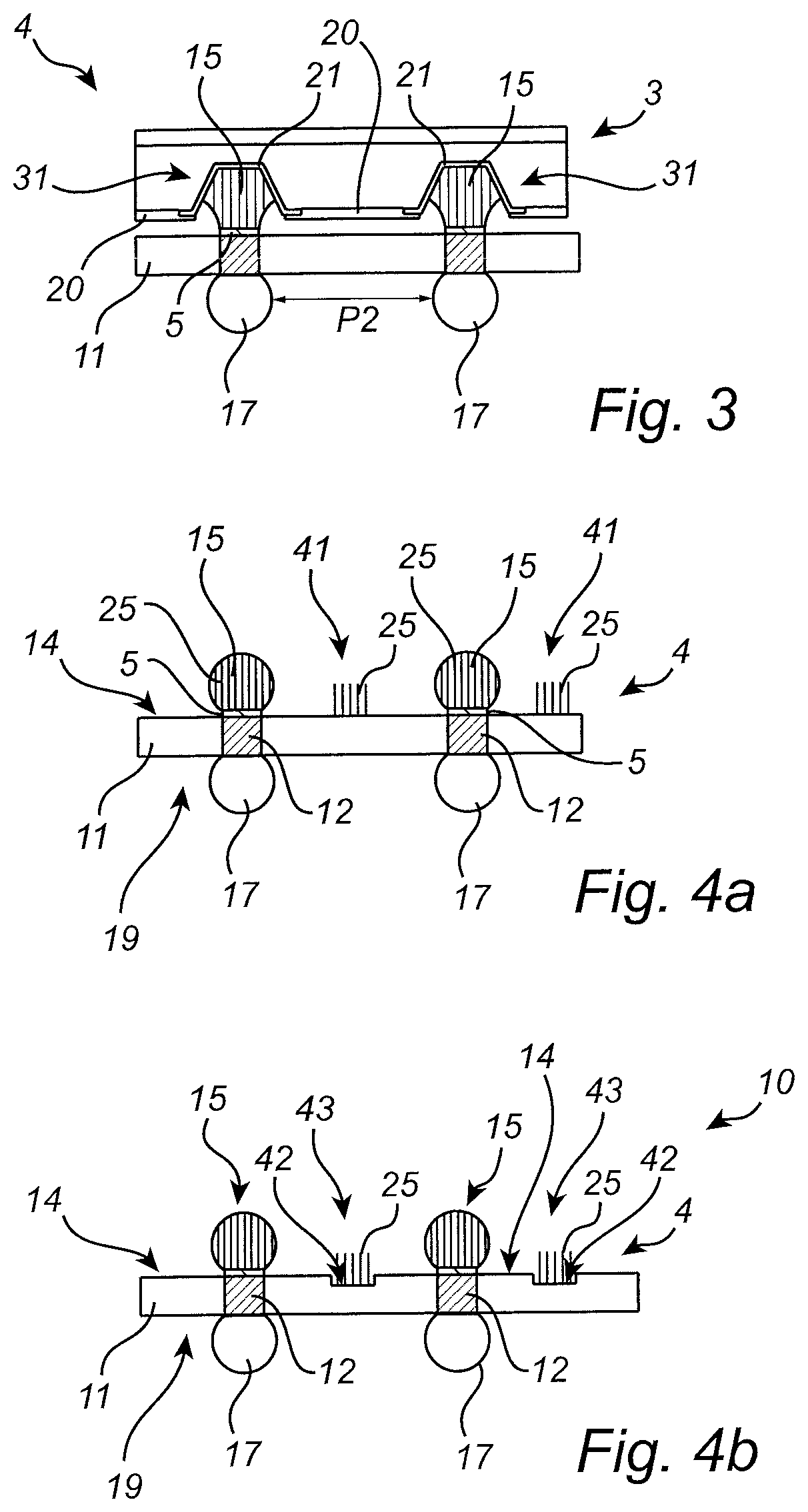Assembly platform
a technology of assembly platform and nanostructure, which is applied in the direction of electrical apparatus, semiconductor devices, semiconductor/solid-state device details, etc., can solve the problems of limiting limiting the form factor and/or the performance of a final electronic device, and the potential of the today's conventional interposer facing the limitations of the number of devices that can be connected, etc., to achieve the effect of reducing the size of the complete electronic assembly, reducing the distance of the bump
- Summary
- Abstract
- Description
- Claims
- Application Information
AI Technical Summary
Benefits of technology
Problems solved by technology
Method used
Image
Examples
Embodiment Construction
[0065]In the present detailed description, various embodiments of the assembly platform is mainly described with reference to an assembly platform being arranged as an interposer device between an integrated circuit and a substrate. However, it should be noted that this by no means limits the scope of the present invention, which equally well includes that the assembly platform may be arranged to interconnect any two types of electrical components, e.g. a die, silicon chips, integrated circuits, analog and / or digital circuits etc. Such an assembly platform may enable to have heterogeneous integration possibilities.
[0066]FIG. 1 schematically illustrates an electronic assembly 1 comprising a substrate, here in the form of a simplified printed circuit board (PCB) 2, an integrated circuit (IC) 3, and an assembly platform 4 arranaed as an interposer device according to an example embodiment of the present invention. The PCB includes PCB connection pads 6 formed on a PCB-substrate 7, and ...
PUM
| Property | Measurement | Unit |
|---|---|---|
| height | aaaaa | aaaaa |
| thick | aaaaa | aaaaa |
| conductive | aaaaa | aaaaa |
Abstract
Description
Claims
Application Information
 Login to View More
Login to View More - R&D
- Intellectual Property
- Life Sciences
- Materials
- Tech Scout
- Unparalleled Data Quality
- Higher Quality Content
- 60% Fewer Hallucinations
Browse by: Latest US Patents, China's latest patents, Technical Efficacy Thesaurus, Application Domain, Technology Topic, Popular Technical Reports.
© 2025 PatSnap. All rights reserved.Legal|Privacy policy|Modern Slavery Act Transparency Statement|Sitemap|About US| Contact US: help@patsnap.com



